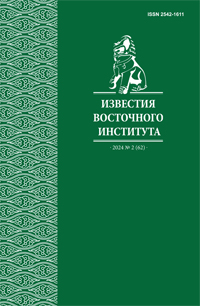The institutional structure of border policy in China’s Northeast
DOI:
https://doi.org/10.24866/2542-1611/2024-2/120-140Keywords:
border policy, Northeast China, international relations in Northeast AsiaAbstract
The paper examines the structure of PRC government institutions involved in the formation and implementation of border policy in China’s Northeast (CNE). The methodology is based on the analysis of the organizational structure and functions of such institutions in the provinces of Heilongjiang, Jilin, Liaoning and Inner Mongolia Autonomous Region (IMAR). The study is based on the concept of border policy, which is defined as the actions of the state that establish the parameters of border functioning, form appropriate institutions, and determine the degree of border permeability. Border policy encompasses domestic processes and mechanisms related to the interaction between the center and the periphery, including issues of socio-economic development of border areas. The study has shown that the structure of regional authorities involved in the formation and implementation of China's border policy depends on the specific developmental objectives of each administrative-territorial unit. It is also adjusted, depending on the states with which the territory shares the border, as well as the character of China’s relations with them. The authors formulate some recommendations to improve the effectiveness of cross-border cooperation between Russia and the PRC, taking into account the peculiarities of border policy institutions in northeastern China.




